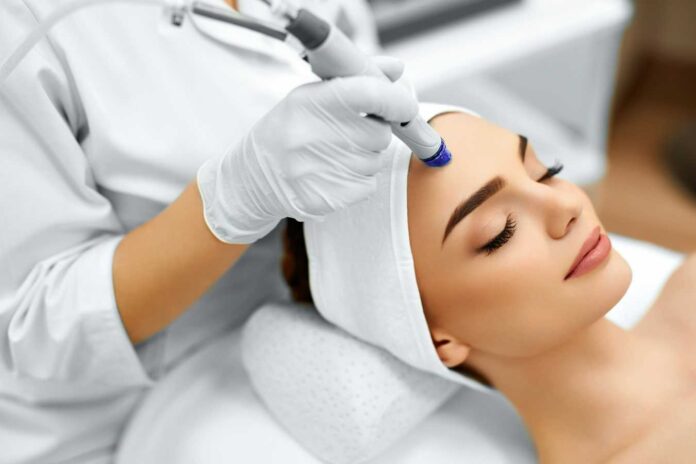Let’s face it: aging will eventually get the better of us at some point. Assuming we get to the point where our skin starts showing clear signs of aging, what will we do to rediscover the younger version of ourselves? Does the process of rejuvenating your skin have to involve going under the knife?
Well, I don’t fancy the thought of undergoing an invasive procedure in the name of beauty. Enter vampire facelifts and dermal fillers. What’s the difference between the two? If you’re looking to restore your youthful look but are unsure which option is ideal, this post is for you. My Botox LA Med Spa explains how vampire facelift works, but first…
Dermal Fillers
As we age, our muscles lose their volume and elasticity. Dermal facial fillers work by infusing some components into your skin as injectable treatment. In doing so, a physician can help replenish and restore your skin. A certified nurse or dermatologist can conduct the procedure at your preferred doctor’s office.
Dermal fillers are available in natural or synthetic form. Hyaluronic acid(HA) is a common natural ingredient in dermal fillers. HA helps prevent drying and maintains skin volume as part of your skin. HA fillers can also be premixed with a numbing agent to minimize discomfort during application.
Poly-L-lactic acid comes to mind as an example of a synthetic dermal filler. It works by stimulating collagen production over time to improve skin volume. Overall, different dermal fillers have their set of pros and cons, implying that one component might work on a specific area while another might not. Talk to a surgeon to understand some of the other dermal fillers available and whether they are ideal for you.
Administration of filler usually takes about 20 to 30 minutes tops. You may feel some tenderness for a day, which may not necessitate medication.
Vampire Facelift
A vampire facelift involves isolating platelet-rich plasma (commonly referred to as PRP) from a patient’s blood; it sounds like technical jargon, but here is what you need to know: By incorporating naturally occurring elements from your body into the treatment, your physician can help you realize a healthier glow.
A physician can also apply a vampire facelift and a dermal filler to achieve better results. This kind of treatment is ideal for addressing wrinkling or general sagging of facial skin. For instance, Juvederm combined with PRP can target lines across the forehead or under the eyes, plumping up and restoring volume.
Usually, a vampire facelift requires a physician to draw blood from your arm. With the help of a centrifuge, the expert isolates PRP from the blood. An experienced injector may then apply a dermal filler to the injection site, creating a facial structure for PRP. Also, they can apply a numbing cream to curb pain.
The final process involves injecting PRP close to the filler sites. However, injection techniques can vary. Some physicians inject PRP superficially, while others opt to inject it deeper into your skin. Expect the procedure to last a little under 2 hours, although this can vary depending on the areas requiring treatment. Sit down with a doctor to discuss the ideal treatment plan for you.
PRP works by promoting collagen production. As a result, new skin cells develop naturally, and tissues regenerate as your circulation improves. PRP growth factors work overtime to firm up the skin, leading to a healthier look overall.
If sagging skin is your primary concern, then a vampire facelift might be your solution. A board-certified surgeon typically conducts the procedure. Also, if the complications that might arise from the injection of fillers are a concern, then a vampire facelift might be for you.
How Long the Results Last
Dermal fillers offer immediate results because they create volume. What does that mean? You’ll notice a difference once the procedure is done. Filler helps create a smooth effect on your skin. But, expect to see better results once the filler starts to do its job and the swelling isn’t an issue.
If you consider a dermal filler, a single treatment is sufficient, and recovery time is usually shorter. The downside of getting fillers is that you’ll need to get them regularly. Thus, it would be best if you had regular maintenance treatment to sustain the results of a dermal filler.
Conversely, a vampire facelift gradually promotes collagen production in your body. As a result, it can take months for you to note a difference in your appearance. But over time, your appearance will improve as the skin regains its volume; This makes a vampire facelift a more viable alternative if you don’t need to keep getting fillers now and then.
Typically, the results of a vampire facelift can last up from nine months up to 18 months. But that’s not all, and some factors can affect how long the benefits last. These include:
- Your age
- Genetics
- Lifestyle habits such as smoking
- Exposure to the sun
Experts note that proper skincare should go hand in hand with applying fillers or a vampire facelift. Thus, adopt the proper skin care regimen to keep your skin glowing after receiving either treatment.
An in-person consultation with the experts can set you on the path to realizing that refreshed look you are after. PRP or a dermal filler may be secrets to glowing skin. Which one do you think will work for your situation? Get in touch to discuss this with a medical practitioner.
































